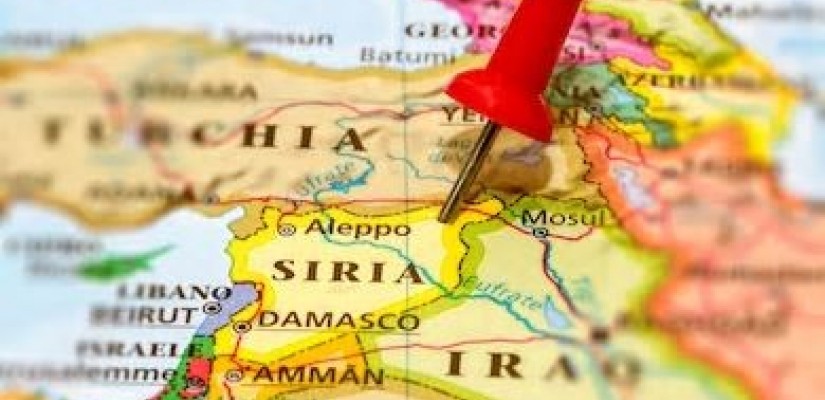The Syrian Civil War has been ongoing since 2011 and is now entering a new phase. The Trump administration has plans for an eventual withdrawal of U.S. troops from Syria now that the Islamic State of Iraq and the Levant (ISIL) has largely been defeated. Syrian President Bashar al-Assad remains in power with support from both Russia and Iran and controls roughly two-thirds of the country. In Syria’s northeast, nearly one-third of the country is controlled by Kurdish forces. Despite efforts by outside powers to find a diplomatic solution to this war, it is likely that conflict will continue for years to come. The fragile peace that now exists among the Syrian Government Forces, the Turkish forces, and the Kurdish military forces is unlikely to last, given that both Turkish President Erdogan and Syrian President Assad have previously stated their intentions to launch attacks on the Kurdish forces situated in the northeast of the country.
Kurds represent the largest ethnic group without a state, however, Kurdish ethnicity is largely split among groups in Syria, Iraq, Turkey, and Iran. Each group differs politically and ideologically. In the midst of the Syrian civil war, Syrian-Kurdish military forces backed by the United States gained autonomous territory by fighting ISIL and filling the vacuum left by the Syrian Army. The U.S.-backed Syrian Defense Forces (SDF), consisting mostly of Kurdish fighters known as the People’s Protection Units (YPG), were instrumental in the U.S. strategy to counter ISIL. Throughout the war, the YPG had maintained its objective of uniting three separate Kurdish-controlled cantons into one combined autonomous Kurdish region known as Rojava. Had such a state come into existence, this would have formally established a “Kurdish corridor” effectively connecting the Kurdish Regional Government (KRG) of Northern Iraq to the Mediterranean through Syria. This Corridor would not be realized however, as Turkish forces intervened in the form of two military operations: Operation Euphrates Shield in 2016, and Operation Olive Branch in 2018.

Turkish officials have repeatedly rationalized military operations into Syria through claims that the YPG is directly linked to the Kurdistan Workers’ Party (PKK), a militant group listed as a terrorist organization by much of the international community. Turkey views the YPG and PKK as one homogeneous group that is just as much a threat as ISIL. Out of fear that the YPG could launch terror attacks into Turkey or expel non-Kurds from a fully-realized Rojava, Turkey has repeatedly called for YPG forces to withdraw to the east of the Euphrates river. Due to the perceived link between the YPG and the PKK, Turkish President Erdogan has vowed to remove any Kurdish-controlled state along Turkey’s southern border with Syria. Additionally, President Erdogan vowed to remove the YPG entirely if the U.S. fails to ensure that their Kurdish allies withdraw east of the Euphrates river. In time, Turkey will likely endeavor to control a buffer zone along its southern border despite disapproval from Washington.
Adding to a growing list of concerns for Kurdish forces, their biggest supporter – the United States – is planning a complete withdrawal from Syria in the near future. Following President Donald Trump’s announcement to withdraw U.S. troops from Syria in December 2018, President Erdogan threatened to launch a third military operation into Syria, stating "In the coming months we will see an operation aimed at removing the YPG and Daesh (ISIL) elements on the ground in Syria." The Kurdish Democratic Union Party (PYD), which governs the Kurdish-controlled portion of Syria, has thus turned to President Assad for an ally against an impending Turkish offensive, creating a temporary partnership that in all likelihood will corrode over time. As of May 2019, the PYD maintains its fragile alliance with President Assad despite the fact that he has vowed to ultimately retake all of Syria, including the Kurdish-controlled territory in the northeast of the country. During an interview in May 2018, President Assad described the SDF as “the only problem left in Syria” and warned that he would not hesitate to use force to retake lost territory east of the Euphrates river. Economically, there is much at stake for all parties involved. Within YPG-held territory there are critical oil and gas fields such as the al-Omar oilfield as well as smaller fields in the eastern province of Deir Al Zor. Also within YPG-held territory are the major cities of Al-Hasakah, Qamishli, and Raqqa.
On April 25, 2019, leaders from Turkey, Iran, and Russia met in Kazakhstan to discuss efforts to rebuild Syria. The underlying purpose of this meeting, however, was to discuss how the future of Syria will play out. Underscoring the intensity of the situation, the Syrian army has begun their assault on Idlib, the last rebel stronghold in Syria, which had previously been labeled by Russia and Turkey as a de-escalation zone, thus demonstrating President Assad’s indifference to upholding agreements. Therefore, it is likely only a matter of time before a military confrontation erupts in the country’s northeast.
